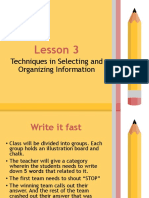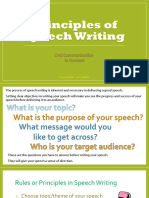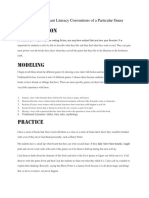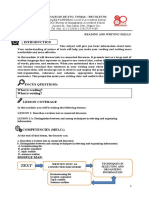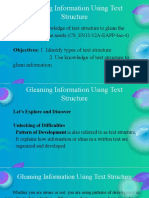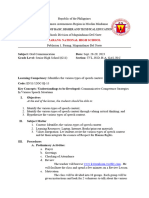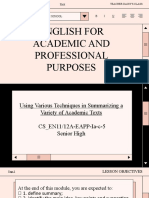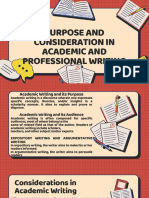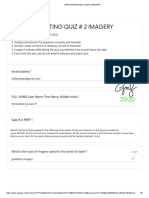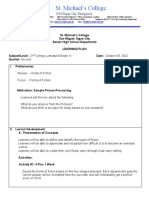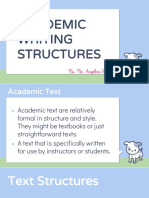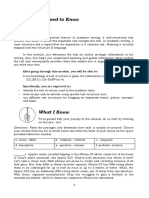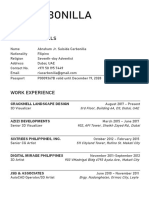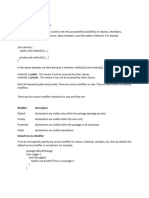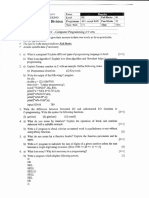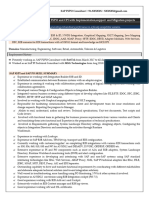100% found this document useful (1 vote)
1K views32 pagesTopic-3-PPT-Text-Structure-1 HUMSS
This document provides an overview of text structures used in academic and professional contexts. It identifies seven common text structures: chronological order, sequence/sequential, cause-effect, problem-solution, compare and contrast, exemplification/classification, and persuasion. Examples of each structure are provided. The document explains that understanding text structure helps readers find specific information, make and interpret arguments, answer questions, and summarize texts by reflecting the structure. It concludes with reviewing text structure identification in practice examples.
Uploaded by
Akisha Jesalva FloresCopyright
© © All Rights Reserved
We take content rights seriously. If you suspect this is your content, claim it here.
Available Formats
Download as PDF, TXT or read online on Scribd
100% found this document useful (1 vote)
1K views32 pagesTopic-3-PPT-Text-Structure-1 HUMSS
This document provides an overview of text structures used in academic and professional contexts. It identifies seven common text structures: chronological order, sequence/sequential, cause-effect, problem-solution, compare and contrast, exemplification/classification, and persuasion. Examples of each structure are provided. The document explains that understanding text structure helps readers find specific information, make and interpret arguments, answer questions, and summarize texts by reflecting the structure. It concludes with reviewing text structure identification in practice examples.
Uploaded by
Akisha Jesalva FloresCopyright
© © All Rights Reserved
We take content rights seriously. If you suspect this is your content, claim it here.
Available Formats
Download as PDF, TXT or read online on Scribd
/ 32










